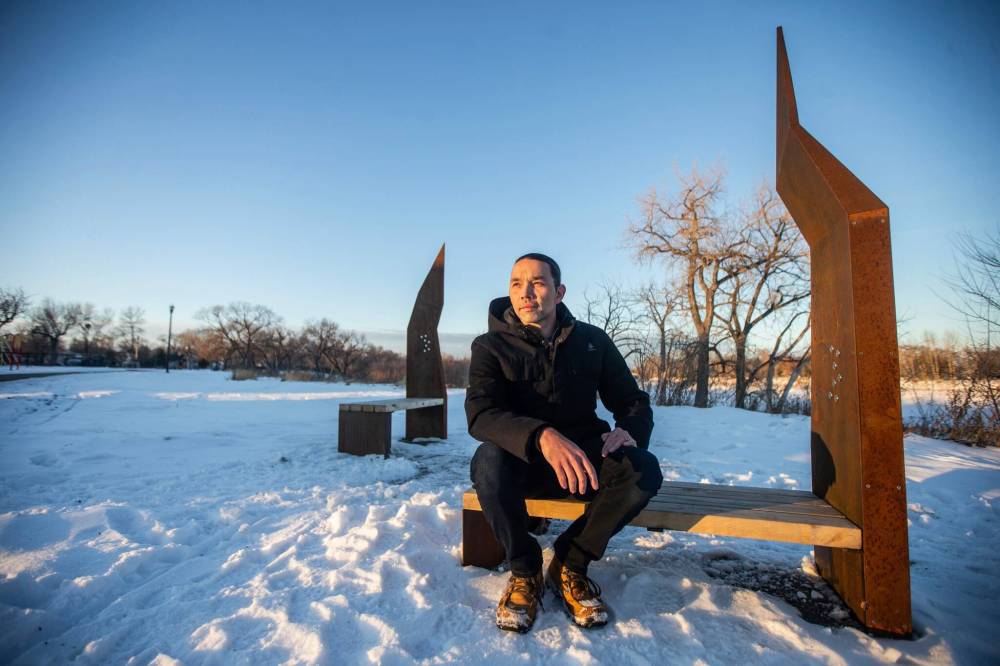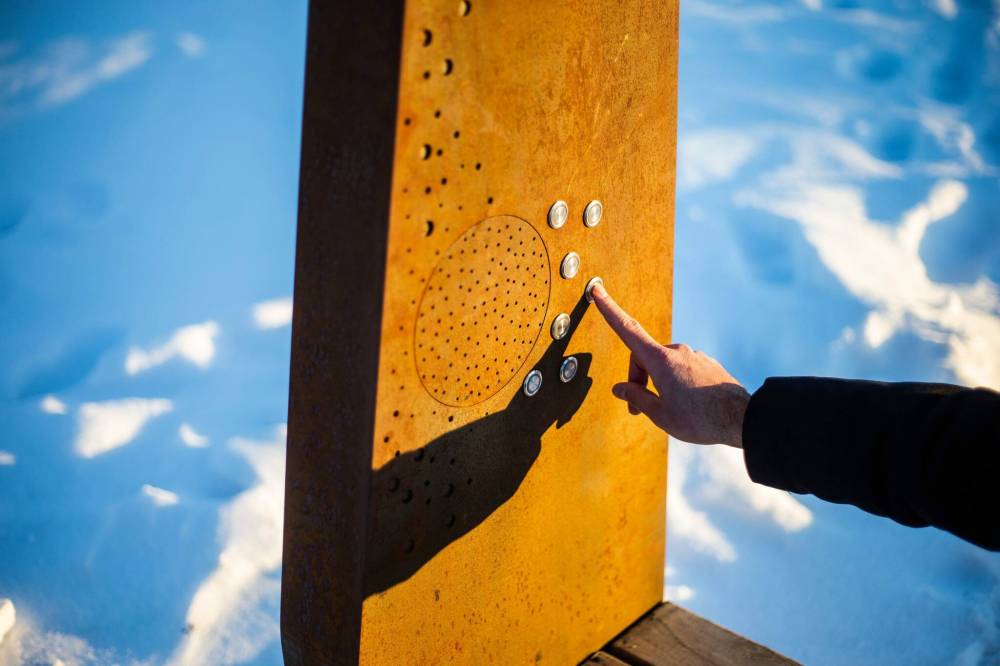New public art piece in Point Douglas really speaks to us
Advertisement
Read this article for free:
or
Already have an account? Log in here »
To continue reading, please subscribe:
Monthly Digital Subscription
$0 for the first 4 weeks*
- Enjoy unlimited reading on winnipegfreepress.com
- Read the E-Edition, our digital replica newspaper
- Access News Break, our award-winning app
- Play interactive puzzles
*No charge for 4 weeks then price increases to the regular rate of $19.95 plus GST every four weeks. Offer available to new and qualified returning subscribers only. Cancel any time.
Monthly Digital Subscription
$4.99/week*
- Enjoy unlimited reading on winnipegfreepress.com
- Read the E-Edition, our digital replica newspaper
- Access News Break, our award-winning app
- Play interactive puzzles
*Billed as $19.95 plus GST every four weeks. Cancel any time.
To continue reading, please subscribe:
Add Free Press access to your Brandon Sun subscription for only an additional
$1 for the first 4 weeks*
*Your next subscription payment will increase by $1.00 and you will be charged $16.99 plus GST for four weeks. After four weeks, your payment will increase to $23.99 plus GST every four weeks.
Read unlimited articles for free today:
or
Already have an account? Log in here »
Hey there, time traveller!
This article was published 26/11/2022 (1140 days ago), so information in it may no longer be current.
A “talking” bench made from weathering steel, reclaimed oak and coloured concrete made its debut as Winnipeg’s newest piece of public art.
Bizindaadiwag, which means “they listen to each other” in Anishinaabemowin (Ojibwe), was conceived and created by artist and architect Ryan Gorrie, a member of Bingwi Neyaashi Anishinaabek, and landscape architect Suzy Melo.
The installation in Point Douglas’s Michaëlle Jean Park is part of Urban Shaman Contemporary Aboriginal Art gallery’s Speech Act Project, created in partnership with the Winnipeg Trails Association.

MIKAELA MACKENZIE / WINNIPEG FREE PRESS
Architect and artist Ryan Gorrie designed Bizindaadiwag, a bench with sound installation that is Winnipeg’s newest piece of public art.
This project is an action to make Indigenous language audible, present and publicly available.
“Given that Indigenous languages are in danger of disappearing, it’s important to announce their importance and engage people in learning and understanding the languages which come from the land and the place they call home,” Gorrie says. “It’s also important to provide a variety of places to sit or gather beyond a typical bench … something that will form part of peoples’ daily lives.
“As much as there are concerning things occurring in our social realm, there are great things as well.”
The work is made up of two benches — one at child-height, one at adult-height — connected by a zigzag pattern on the ground.
“The zigzag is symbolic of the path of our lives, with each of the seven points representing a different stage in our lives,” says Debbie Keeper, interim director at Urban Shaman. “The vertical elements which hold the audio components represent the spirit. We enter the world as spirit and leave the world as spirit.”
The audio is in a mix of Anishinaabemowin and English; it quickly became a key element of the installation, as it provides an opportunity to engage with Indigenous language in a public space, Gorrie says.
“We want to raise the profile and importance of Indigenous languages in as many ways as possible,” he says. “It also corresponds to the International Decade of Indigenous Languages.”
Voiced by Gorrie and his two children, the audio is controlled by seven buttons located on each side of the project.
“Each end of the installation has 14 buttons (28 in total), which contain duplicate audio for someone seated or for someone who is standing or in a mobility device. The language component has the potential to evolve and change periodically,” he explains. “The hope is to partner with content providers to realize this portion of the project.”
Currently there are simple phrases, verbs, nouns and a song loaded into the bench.
The location of the installation is significant, Gorrie says. The team wanted it to be situated somewhere publicly accessible along the Trans Canada Trail.
“It was a search that was quite vast in potential; however, connections with Winnipeg Trails and Urban Shaman gallery made the chosen site quite obvious, as well as given it was under pathway renewal at the time by City of Winnipeg,” he explains.
The project team spent a lot of time on site, planning and installing the project.

MIKAELA MACKENZIE / WINNIPEG FREE PRESS
The buttons on Bizindaadiwag play language content that includes words, phrases and a song in a mix of Anishinaabemowin and English.
“As the project site is located on a very active multi-use pathway, we had many interesting conversations with residents about the project, language, design, art, etc…” he says. “We did the bench installation first, then the planting. The language piece came last. People were very eager to push the buttons and hear what was being shared.”
Gorrie was chosen to be part of the project because of his artistic background, architecture experience and his interest in language revitalization.
“As a father he is interested in his children being able to speak the language,” Keeper says. “He has practical knowledge of how things work in his role as an architect, and primarily he has an artistic background — he was in art school before he went into architecture.”
Bizindaadiwag is just one component of the gallery’s Speech Act Project.
“For the second component, we worked with the Trails Association, and created the speech trails app that you can download on your phone and people can make pins about it,” Keeper says.
The third element will be a translation of the gallery’s program into one of the seven Indigenous Manitoba languages.
Gorrie stresses the importance of accessible art for all.
“Public art, particular to this project, is very important, as it makes space for Indigenous languages to be heard and available to everyone. Generally, public art causes us to be intrigued, surprised and hopefully motivated to see and hear things differently,” he says.
This $30,000 art installation project was funded through grants from the Canadian Heritage — Indigenous Languages and Cultures Program — Indigenous Languages Component, Winnipeg Foundation, Manitoba Sport, Culture and Heritage, Trans Canada Trail and others.

Our newsroom depends on a growing audience of readers to power our journalism. If you are not a paid reader, please consider becoming a subscriber.
Our newsroom depends on its audience of readers to power our journalism. Thank you for your support.
History
Updated on Wednesday, November 30, 2022 2:25 PM CST: Minor copy edit






